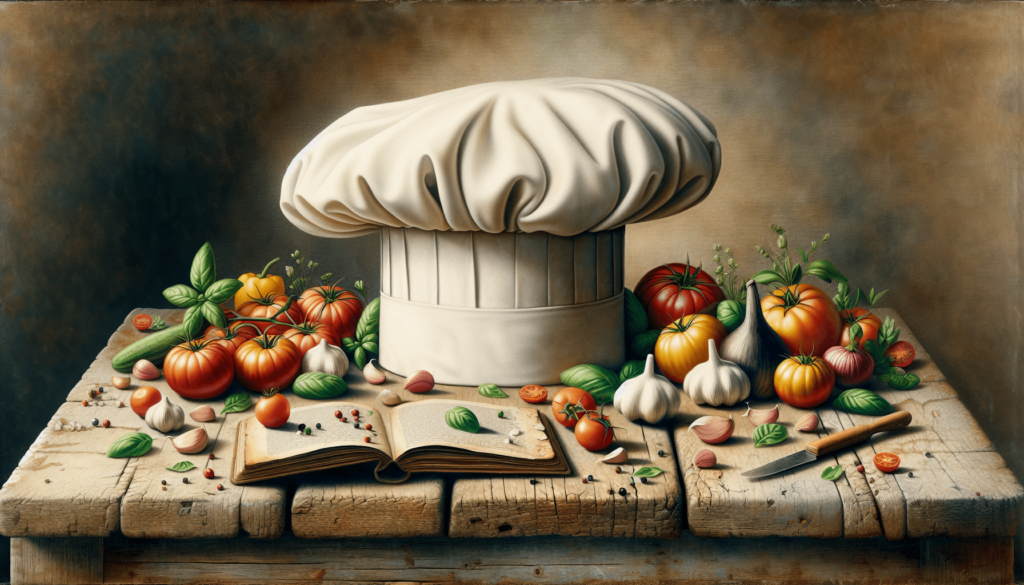The Meaning of a Culinary Journey :
Have you ever wondered what it truly means to embark on a culinary journey? This concept stretches beyond the simple act of consuming food; it encompasses the exploration of diverse cultures, the understanding of intricate cooking techniques, and the appreciation of flavors that tell stories of their own.
At its core, a culinary journey is about connecting with the world around you through the universal language of food. It’s a voyage where you learn not just about ingredients and recipes, but also about the cultural fabric that weaves people together.

Table of Contents
A Historical Perspective on Culinary Journeys
To appreciate the depth of culinary journeys, let’s go back in time. Historically, the movement and evolution of food have mirrored the migration patterns of humanity itself. Spices from Asia, tomatoes from the Americas, and pasta from Italy have all found new homes and evolved within other cultures.
For instance, take the spice trade routes. These ancient paths not only facilitated commerce but also allowed for the cross-pollination of culinary traditions. It’s fascinating to think about how something as simple as a spice could influence the entirety of a region’s cuisine. Consider black pepper, originating in India but now a staple in kitchens around the globe.
Key Evolutionary Milestones
Let’s break down some significant milestones:
| Time Period | Key Event | Impact on Culinary Practices |
|---|---|---|
| Ancient Times | Spice Trade Routes | Introduction of spices like black pepper and cinnamon to Europe. |
| Age of Exploration | Columbus’s voyages | Introduction of tomatoes, potatoes, and chocolate to Europe. |
| Colonial Era | British influence in India | Fusion of Indian spices with British recipes, leading to dishes like Chicken Tikka Masala. |
These milestones not only altered what people ate but also how they cooked, leading to new culinary techniques and traditions.
Current Trends in Culinary Exploration
Today, culinary journeys are heavily influenced by globalization and technology. You can experience a world of flavors without leaving your home, thanks to food blogs, cooking shows, and international supermarkets. Moreover, there’s a growing fascination with sustainable and ethical eating.
The Rise of Food Tourism
Food tourism is a burgeoning industry, encouraging people to travel with the primary goal of tasting the world. Countries like Thailand, Italy, and Japan have become top destinations for food enthusiasts.
However, food tourism isn’t only about fine dining. Street food tours in cities like Bangkok or Mexico City offer an authentic taste of local culture. The street food experience is often more about the stories behind the food—stories of family recipes, local customs, and the everyday lives of the vendors.
Farm-to-Table Movement
Another significant trend is the farm-to-table movement. This trend emphasizes sustainability, locality, and freshness. Restaurants that adopt this approach often source their ingredients from local farms, ensuring that what you eat is not only fresh but also environmentally responsible.
Understanding Key Concepts in Culinary Journeys
Defining Culinary Journey
A culinary journey is a holistic exploration of food that combines cooking techniques, ingredient discovery, cultural understanding, and experiential learning. It’s not just about eating; it’s about appreciating the context and stories behind the food. Think of it as a narrative where each dish is a chapter, and each ingredient is a word contributing to a larger story.
Breaking Down the Concept
Here’s a more detailed breakdown of what a culinary journey can include:
- Cultural Exploration: Learning about different cultures through their food traditions.
- Ingredient Discovery: Finding new and unique ingredients and understanding their uses.
- Skill Acquisition: Mastering new cooking techniques from around the world.
- Experiential Learning: Participating in cooking classes, food tours, or even farming activities.
For example, suppose you visit Italy and participate in a pasta-making class. You’re not just learning to make pasta; you’re understanding the Italian philosophy of food—fresh ingredients, simplicity, and the joy of sharing meals.
Detailed Case Studies
Example 1: The Influence of Japanese Cuisine Globally
Japanese cuisine provides an excellent case study for understanding a culinary journey’s impact. Initially, sushi was a relatively unknown concept outside Japan. Today, it’s a global phenomenon. This culinary journey began with Japanese chefs sharing their art with the world. Gradually, sushi restaurants started popping up in various countries, each adapting to local tastes while preserving the essence of Japanese tradition.
Yet this journey also goes the other way; Western influences have begun permeating Japanese cuisine. For instance, adaptations like the California Roll blend traditional Japanese techniques with American ingredients.
Example 2: The Evolution of Fusion Cuisine
Fusion cuisine is a testament to culinary journeys that blend different traditions to create something new. Consider Thai-Mexican fusion, which combines the spiciness and fresh herbs of Thai food with the corn-based culinary techniques of Mexico.
Restaurants like “Pok Pok” in Portland, Oregon, have gained international acclaim for their innovative fusion dishes. These examples illustrate how culinary journeys can lead to entirely new gastronomic landscapes, offering rich experiences for food lovers.

Comparing Different Perspectives
To provide a balanced view, it’s useful to compare traditional culinary practices with modern, experimental approaches.
Traditional vs. Modern
| Aspect | Traditional Cuisine | Modern Experimental Cuisine |
|---|---|---|
| Ingredients | Locally sourced, seasonal | Exotic, rare, even lab-grown |
| Techniques | Time-tested, often slow | Innovative, often speedy |
| Philosophy | Rooted in culture and tradition | Driven by creativity and novelty |
| Presentation | Focus on flavor and tradition | Aesthetic, often artful |
Both perspectives contribute significantly to the culinary world. Traditional cuisine offers the comfort of time-honored flavors, while modern experimental cuisine pushes boundaries, offering new experiences.
Impact Assessment
The impacts of culinary journeys are manifold. On a personal level, they can broaden your horizons and deepen your understanding of world cultures. Sociologically, they can foster greater cultural exchange and mutual respect. Economically, culinary tourism boosts local economies, supporting small businesses and artisanal producers.
For example, the Basque Culinary Center in Spain not only teaches cooking but also enhances cultural understanding and economic development in the region.
Future Directions and Implications
Predicting Future Trends
One trend likely to gain momentum is the integration of technology in culinary journeys. Augmented reality (AR) dining experiences could immerse you in the culture from which your dish originates, offering a multi-sensory exploration. Imagine putting on AR glasses and watching a chef in France prepare the very meal you’re about to eat—all from the comfort of your local restaurant.
Implications for Society and Industry
The increased focus on sustainability will likely continue, leading to more eco-friendly culinary practices. This will affect everything from how ingredients are sourced to how food waste is managed. Furthermore, as more people become food-conscious, there will be greater demand for transparency regarding ingredient sourcing and cooking methods.
Let’s ponder for a moment—how do you think these advancements might change your day-to-day interactions with food?
Conclusion
To summarize, a culinary journey is more than just a gastronomical exploration. It is an enriching experience that encompasses cultural discovery, the quest for new ingredients, mastering cooking techniques, and experiential learning. This journey is substantiated by historical context, current trends like food tourism and the farm-to-table movement, and is illustrated through detailed examples like Japanese cuisine and fusion food.
The impact of culinary journeys is far-reaching, influencing personal growth, social cohesion, and economic vitality. Looking ahead, technological advancements and sustainable practices promise to redefine our culinary experiences even further.
So, next time you sit down to a meal, think about the journey that brought your food to your plate. What stories and histories are encapsulated in each bite? Perhaps your next meal could be the start of your culinary adventure. What’s the first stop on your journey going to be?
